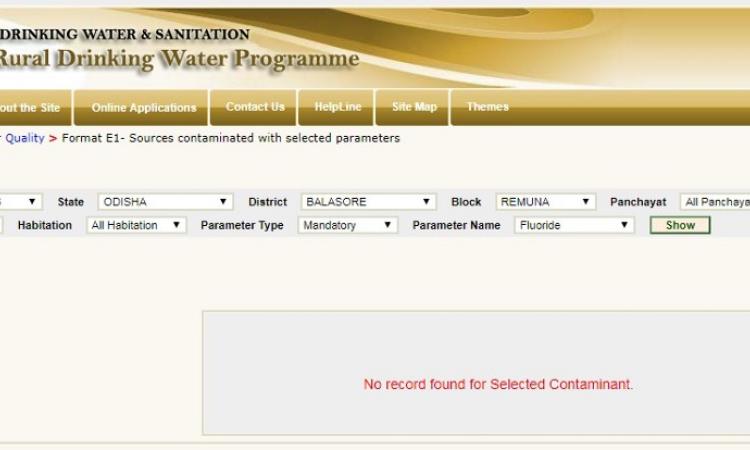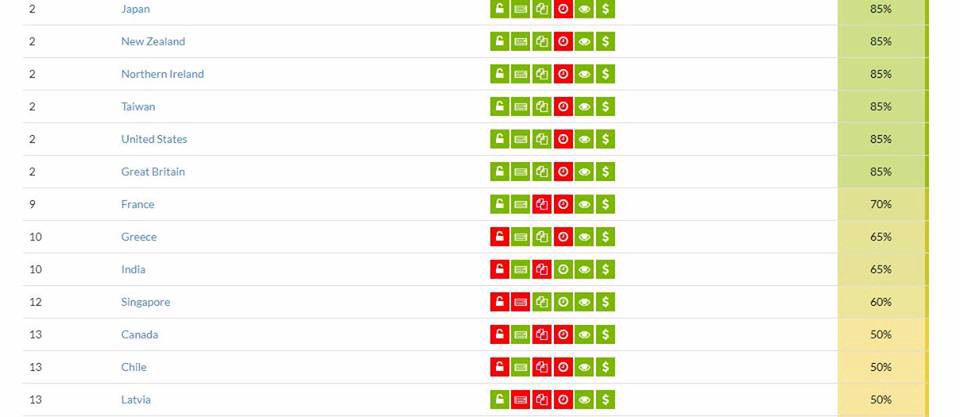
Back in 2015, the Member of Parliament (MP) from Balasore, Odisha got to know about a strange problem in his constituency. There were reports of a number of bone deformities and crippled people in areas surrounding Patripal village of Remuna block. They seemed to be related to fluoride in water, causing a disease called Skeletal Fluorosis.
The problem was that Government data seemed to indicate the entire Balasore district to be free from fluoride (See above figure). But how then were people getting crippled? This started a journey for the MP from Balasore, Rabindra Kumar Jena.
Across India, there are more than 200 districts that report habitations with high fluoride according to the Integrated Management Information System (IMIS) of the Government of India. This data set became open in 2015 and since then has become one of the few granular data sets of the country. This data set also is the reference point for planning safe drinking water programmes in the country. So for example, if a district is not here, there is not much one can do to address the problem on ground.
When Mr. Jena presented this curious case at a meeting in December 2015, organised by Swaniti Initiative and Arghyam, the audience was not very surprised. There are several such places in the country. But how does one get the ground information recognized?
The Fluoride Knowledge and Action Network (FKAN) then stepped in. After ground observations, it conducted studies on ground with supporting evidence and participation by government departments. This led to the formation of the District Fluoride Mitigation Committee (DFMC) in June 2016 and an assessment of Remuna block was done.

The voice of the MP became more amplified through all these efforts, and eventually in 2016–17, villages of Patripal started appearing on IMIS. The acceptance of this information, through its appearance on IMIS now became a strong tool to take action. For example, the Ministry of Health leads a national effort on Fluorosis with the National Programme for Prevention and Control of Fluorosis (NPPCF). This data now becomes the basis for asking NPPCF to consider Balasore as fluorosis affected.
The larger picture is that of water quality data becoming open, and its subsequent acceptance, reliability and access to people. A survey conducted by the Open Knowledge Network listed countries with an Index of Water Quality availability. It considered aspects such as open licensing, ability to download, ability for machine readability, and other aspects. India did not figure too highly in this survey.

Much more important is the aspect of accuracy of this available information. Our studies have shown several suspect patterns in the IMIS. For example, the entire data of a single year of a single laboratory had the same value of 2 ppm for a parameter. Or the reporting of extremely high values such as 300 ppm for fluoride in a consistent manner, and other such anomalies.
In these pages we have earlier published maps of IMIS Fluoride data. These maps have been extremely useful for the community working on these issues and in related areas of safe drinking water and malnutrition. But the root issues need to be addressed so that we are able to use data effectively to cater to the millions who are still without the basic need of safe drinking water.
For more information on this issue, please visit the Fluoride Knowledge and Action Network's website. You can also write to Sunderrajan Krishnan and Vikas Ratanjee, and join FKAN on Facebook.
This post has been republished with permission from the author. It was originally published here.
/articles/data-journey-odisha